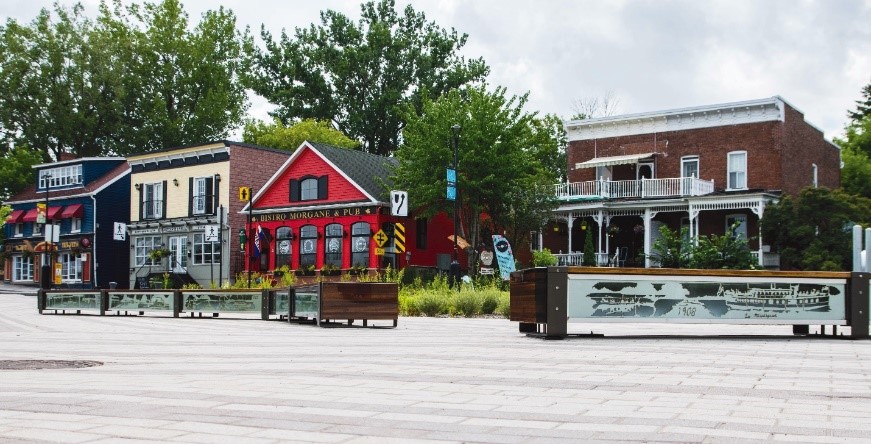Sessions throughout Friday and Saturday will cover a wide range of topics, from aerial photography, how to prepare for flying to the Bahamas, Transport Canada, NAV CANADA, and much more!
Interested in seeing what the weekend has to offer? Check out the speaker bios and session descriptions below.
Event Calendar - EN (1)Event Calendar - EN (2)
Event Schedule
Learn more about the event schedule, including speaker bios, session descriptions, musical guests and more!
Thursday June 23
9:00am - 4:30pm - Registration
Check in at the airport on Thursday June 23
4:30pm - 8:00pm - BBQ Hosted by APPH
Join us at the airport for a delicious BBQ and traditional Quebecois music!
Chasse Balcon will be playing at 4:30pm – 5:30pm and 6:00pm – 7:00pm
Learn more about the musicians here:
8:00pm - 10:30pm - Celebrate the Fête Nationale
Celebrate Quebec’s Fête Nationale holiday with fireworks at Fort St-Jean! Free transportation is available for attendees to and from the airport and Holiday Inn hotel.
Shuttle schedule:
8:00pm: CYJN to Fort St-Jean (Fête Nationale)
10:45pm: Fort St-Jean to CYJN
11:00pm: CYJN to Holiday Inn
Friday June 24
9am – 4:30pm: Registration and information booth will be available
9am – 6pm: Exhibition – Meet our exhibitors here!
9am – 5pm: Static display
Friday Shuttle Schedule
Holiday Inn to CYJN
8:15am
8:45am
9:15am
CYJN to Holiday Inn
4:00pm
4:30pm
5:00pm
Friday Sessions
9:30am - 10:45am: Insurance Q&A with Magnes
Location
Hangar 1 at the CYJN airport (signage will be available)
About the session
Join special guest Steven Godfrey, Vice President – Aviation from the Magnes Group, COPA’s trusted insurance broker, for a discussion on several hot insurance topics:
The Aging pilot and Insurance Availability
As the pilot population ages in Canada, more and more people find themselves struggling to maintain coverage at the same level if they can find coverage at all. We will discuss the things you need to know as you reach 60 years of age and beyond.
Ultralight Insurance
How the insurance industry looks at various types of ultralight aircraft. What you need to consider as you look at an ultralight purchase.
Block Time Arrangements
Block time arrangements are an increasingly popular trend in recreational aviation as the cost of aircraft ownership increases. These arrangements are however rife with potential danger for aircraft owners. We will discuss the issues you need to be aware of before you enter into a block time agreement.
About the speaker
Steve Godfrey the Vice President – Aviation with The Magnes Group and is an experienced pilot with over 3,000 hours of flight time on 17 aircraft types. He has spent the last 16 years building his career in aviation insurance as both a broker and as an underwriter. He has served as the Head of General Aviation with Swiss Re Corporate Solutions in Canada and has lead the national aviation practice at JLT and Arthur J. Gallagher.
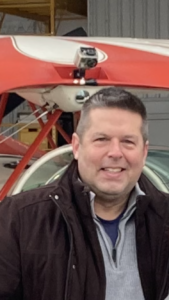
9:30am - 10:45am: Flying to the Bahamas
Location
Hangar 2 at the CYJN airport (signage will be available)
About the session
What airplane pilot hasn’t dreamed of flying over the crystalline, aqua-hued waters of the Atlantic Ocean, especially in the Bahamas?
This presentation will show you how to plan the most memorable trip to the Bahamas, step by step.
We will see:
- Which islands to choose
- Which air routes to choose
- Which departure point to choose on the mainland.
- Customs formalities on arrival
- The documentation required to move from one island to another
- What to bring for your safety
- The procedure for returning to the United States
My first trip to the Bahamas dates back to 1988 and for the past ten years, I have made more than ten trips to the Bahamas, so I feel I am in a position to pass on my knowledge and at the same time, share my experiences with you.
Click here to view a video of flying in the Bahamas.
About the speaker
Marc-André Théorêt
I have been a pilot since 1984 despite a 10-year break in the early 2000s; I am a notary by profession, a real estate developer and have been a travel columnist for Aviation Québec magazine for over 5 years.
I have my IFR rating since 2011 and I use it frequently when I travel with my current aircraft, a 2006 Cirrus SR22. My passion for flying has taken me all over North America and I can say that I must have landed at more than 100 different airports since I started flying.
On that note, most of my significant travels are chronicled in every issue of Aviation Magazine, a notice to those interested in looking for destinations!

9:30am - 10:45am: NORAD Intercept
Location
Hangar 3 at the CYJN airport (signage will be available)
About the session
If you think this can’t happen to you, in July 2020 a C172 Skyhawk was intercepted after it violated a Temporary Flight Restriction (TFR) over the Trump National Golf Course.
Around 11 a.m., an F-15 fighter jet was dispatched by the North American Aerospace Defense Command (NORAD) to intercept a Cessna 172 after the single-engine private aircraft entered a temporary flight restriction area set up around Trump National Golf Course, according to NORAD spokesperson Cameron Hillier. Hillier said the plane’s pilot had not been given proper clearance and had not been in contact with air traffic controllers.
A Facebook user said he spotted multiple New Jersey State Police troopers with lights flashing circle an aircraft that had landed at Sussex Airport Saturday early afternoon. Oops. The penalties for violating restricted airspace can be severe according to the FAA. Pilots can face possible suspension or loss of their pilot’s license. [source]
Temporary flight restrictions (TFR) are commonplace in the U.S. They cover everything from short-term pop-up TFRs such as for sporting events, to extensive ones such as the permanent Washington, D.C., no-fly zone. In Canada, we have seen several TFRs, including the G7 Summit in Charlevoix QC in 2018, a TFR spillover into Canada when President Bush attended a baseball game in Detroit, Mich. the Francophonie Summit in Quebec City or on President Barack Obama’s Ottawa visit in 2016.
So, do you know what to do (and not to do) if your wingman is now an F-18?
About the speaker
Maj Cameron Lowdon enrolled as an Aerospace Controller in the Royal Canadian Air Force in 1990 after graduating from Dalhousie University. After initial qualification in North Bay as an Air Weapons Controller, he began a diverse career that has taken him to varied OUTCAN positions. These included stints with US Air Force Space Command in Colorado Springs, NATO AWACS in Geilenkirchen, Germany and a second tour with Space Command at the Joint Space Operations Center in Vandenberg AFB, CA. Within Canada, he has held training positions at both CFSAS in Cornwall, Ont and CFSACO in Winnipeg, MB.
All of this surrounded two tours with NORAD in North Bay where he was actively involved with 9/11 Operations. Prior to his recent stint in Colorado Springs, he held a joint position with the Canadian Army as a Military Authority at the Canadian Army Simulation Centre in Kingston, Ont.
Maj Lowdon deployed twice, the first as an Air Liaison Officer at RC(S) in Kandahar and the second as a Senior Offensive Duty Officer at Al Udeid Air Base, Qatar.
Maj Lowdon is currently stationed at the NORAD HQ in J33 Ops and spends a great deal of time involved with the Civilian Air Education Training program helping to ensure a smooth and seamless integration between the Homeland Defence mission and the General Aviation population.
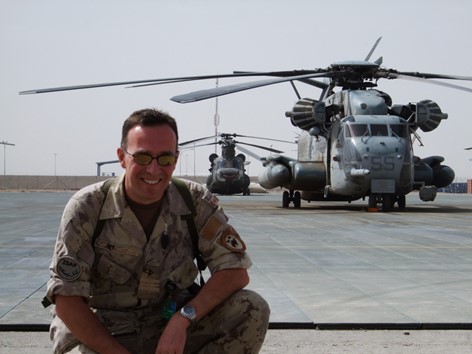
11:00am - 12:15pm: Building the Nieuport 17
Location
Hangar 1 at the CYJN airport (signage will be available)
About the session
We will transport you back in time, back in the days of early aviation, some of their building technics, engines used, propellers, instruments, materials etc…
Dressed in WW1 French aviator uniforms, we will present a montage video on how we constructed a French WW1 biplane. It is a 7/8 scale built from plans supplied by the late Graham Lee in Alberta.
This aircraft had the role of observation and light bombing. Its crew of 2 were the pilot often a lieutenant in rank and a captain trained as an observer. Added duty of the observer was to fend off enemy fighters with one of two Lewis machine guns.
Gilles and I will explain our relationship and interest in building such a vintage aircraft. We did not build an aircraft, we recreated a WW1 biplane that served in the escadrille N162. We will describe the difficulties encountered in different steps of the project that lasted 4 years.
We will host 2 one-hour presentations: in French and English that will end with a small guided tour of the Nieuport 12 on display.
We are looking forward to greeting you during your visit to our beautiful historic St-Jean-sur-Richelieu airport…it should be an exciting weekend.
About the speakers
Richard Legault
At age 12 my father built a Miranda RA14 in the cellar of our home. My room was right above and I could hear the sound of tools as he was building. As I grew older, I managed to take part in his project that took him 6 years to build. In 1979 after my solo on a glider, I converted to engine and earned my private in the Miranda RA14.
Gilles Paradis
Gilles is an avid scaled radio control modeller. At a young age, he discovered his engineer talent in scaling down real airplanes and flying them. His talent proved very successful in the building of the 7/8th scale Nieuport 12 that I currently fly.
Alban Marcoux
We had a third hand in the project. He is a young 89-year-old retired fireman and an RC modeller fond of anything that flies.
We all share a vivid passion for early aviation and especially WW1. The N12 project took us 4 years to get it airworthy and as we did not track the hours, Gilles always will repeat his famous phrase: “They were hours of pleasure.”

11:00am - 12:15pm: Formation Flying with the CAB Boys
Location
Hangar 2 at the CYJN airport (signage will be available)
About the session
There is nothing more exciting than seeing several aircraft flying in formation. What is less obvious is all the planning and execution that goes into making formation flying look so easy!
Join us for an entertaining presentation on this type of flight, the process of training a group of pilots and the related aerial photography concepts. All based on the history of the CAB Boys of the 46th COPA Club of St-Georges. We will also discuss the risks and pitfalls that this type of flight can bring to those who do not prepare and train for it.
The Beauce Aeronautical Club is not only known for its friendly and dynamic atmosphere, but also for its unique group of formation flying pilots, the CAB Boys. The CAB Boys have been flying regularly in the skies over Saint-Georges and elsewhere in Beauce for the past dozen years. They are often seen at various events.
About the speakers
Michel Pomerleau
Michel Pomerleau, military and corporate pilot as well as member of COPA since 1964, has been flying his original amateur construction since 1985.
After a career as a pilot officer for the Canadian Forces from 1963 to 1994, Michel Pomerleau became a corporate pilot for Aviation CMP Inc. from 1997 to 2008. When he retired, he made Saint-Georges his final destination. It is within the Club aéronautique de Beauce (CAB) that he gets involved as a volunteer.
In 2006, Michel Pomerleau started training pilots to fly in formation. “I trained eight pilots in 2006. We flew two or three times a week. It was the talk of the town. Even in Quebec City, when we go there, the air traffic controllers clear the runway for us. They like to see us.”
Hughes Drouin
Hugues Drouin, LPP since 1977, has accumulated 2200 hours on C-150, C-177, PA-15, F1 Rocket, Piper Arrow and finally on the RV6. He has been flying in formation since 2006 and has acquired some experience in taking pictures and videos in formation flight.
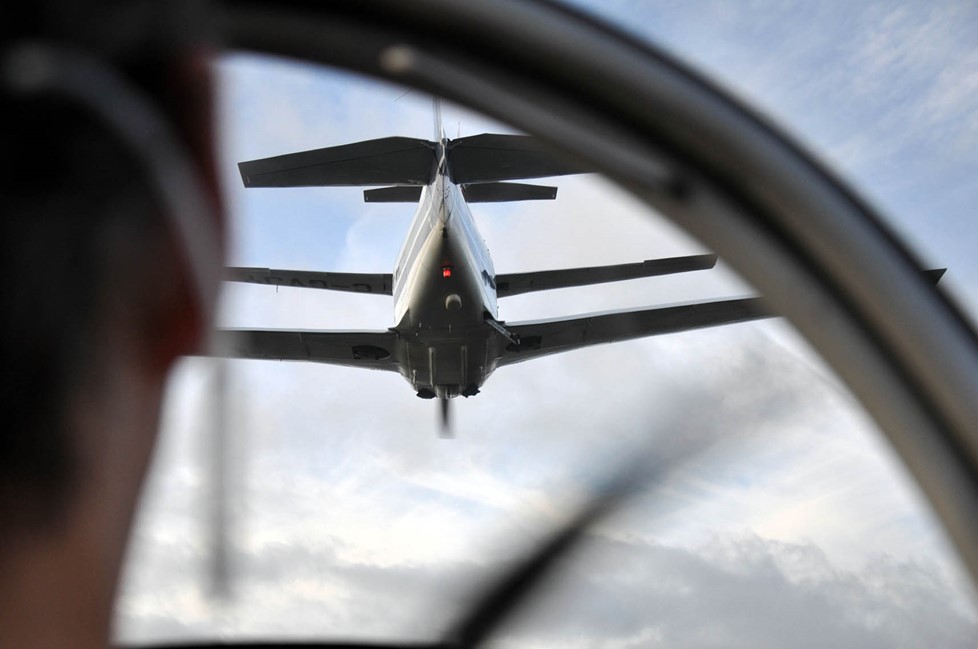
11:00am - 12:15pm: Club History with Canadian Aviation Historical Society
Location
Hangar 3 at the CYJN airport (signage will be available)
About the session
Did you know that pilot associations have a long interesting history?
After the end of the First World War, it became apparent that the Canadian Army would need a base of trained pilots from which resources could be drawn in the event of future conflict.
In 1926, the Department of National Defense (DND) agreed to provide two aircraft free of charge to any flying club that met certain requirements, including providing a suitable aerodrome from which to fly and finding at least 30 members who were willing to become qualified pilots.
DND would also subsidize training at $100 for each pilot certificate granted and $3 per flight hour for training between private and commercial licenses. This seemed like a very good deal for aviation enthusiasts.
From 1928 to 1932, 23 subsidized flying clubs were registered in Canada under this program.
About the speaker
Jim Mason began his aviation career as a young aircraft spotter in the 1960s. After starting an aircraft washing business at the age of 15, he was later hired as a line boy and aircraft cleaner at Execaire Aviation, and after obtaining his commercial pilot’s license, he became a flight dispatcher and later a commercial pilot for the company. This led to a 40-year career with Air Canada and HiFly, as well as becoming a certified aviation auditor.
He is currently President of the Montreal Chapter of the Canadian Aviation Historical Society (CAHS) which is the oldest and largest organization in the world dedicated to the celebration and documentation of Canada’s aviation heritage.
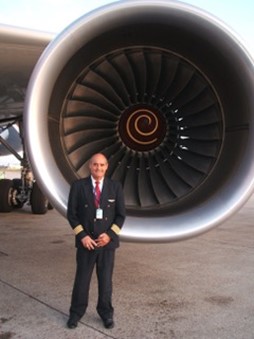
1:30 - 2:45 Aviation Weather with CMAC-E
Location
Hangar 2 at the CYJN airport (signage will be available)
About the session
Ever wonder what it takes to predict the future? Just ask a meteorologist!
Come learn what it takes to join the exciting profession of aviation meteorology in Canada. Learn about the different aviation forecast products Environment and Climate Change Canada meteorologists create for the aviation industry 24/7. We’ll show you the tools and methods we use to forecast the most likely weather occurrences and talk about the impacts of different hazardous weather on the aviation industry.
Join us rain or shine!
About the speakers
Amanda De Monte
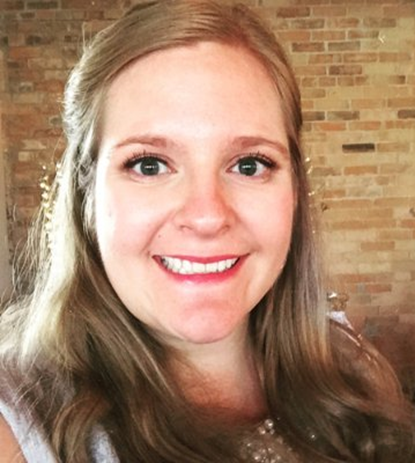 Amanda found her love for the aviation industry at the age of 12 when she joined 283 Squadron of the Royal Canadian Air Cadets in Vaughan, ON. She discovered a love and respect for weather while completing her glider and private pilot’s licences in 2004 and 2005 respectively. With these passions well established, Amanda graduated with a Specialized Honours Bachelor of Science in Atmospheric Science from York University in 2011. She began her career with Environment and Climate Change Canada in 2012 and has had the privilege of working for offices in Halifax, Edmonton and now Montreal. She also had the privilege of forecasting for the aviation industry in New Zealand from 2016-2018, enjoying weather the spins the other way and forecasting volcanic ash in the south west pacific. Amanda is fluently bilingual, a skill that has proven necessary for both her career and life in Montreal.
Amanda found her love for the aviation industry at the age of 12 when she joined 283 Squadron of the Royal Canadian Air Cadets in Vaughan, ON. She discovered a love and respect for weather while completing her glider and private pilot’s licences in 2004 and 2005 respectively. With these passions well established, Amanda graduated with a Specialized Honours Bachelor of Science in Atmospheric Science from York University in 2011. She began her career with Environment and Climate Change Canada in 2012 and has had the privilege of working for offices in Halifax, Edmonton and now Montreal. She also had the privilege of forecasting for the aviation industry in New Zealand from 2016-2018, enjoying weather the spins the other way and forecasting volcanic ash in the south west pacific. Amanda is fluently bilingual, a skill that has proven necessary for both her career and life in Montreal.
Steve Boily
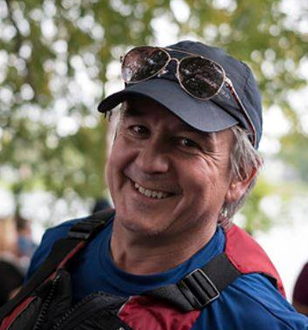 Steve began considering a career in weather as a teenager after trying to sail a windsurf for the first time. Predicting the wind means predicting the future weather, but he quickly realized that this is also the biggest challenge for meteorologists! Steve received his B.Sc. in Physics from the University of Quebec in Montreal in 1992 and his graduate degree in Atmospheric Science from the same university three years later. He started his career with the Meteorological Service of Canada at Environment Canada in 2001. He truly learned his trade at the Mountain Weather Center in Kelowna, BC from 2002 to 2004. He has been involved with the Canadian Aviation Weather Centre – East in Montreal since its inception in 2004 and is now part of the leadership team at CMAC-East as the person responsible for the User Coordination and Outreach program.
Steve began considering a career in weather as a teenager after trying to sail a windsurf for the first time. Predicting the wind means predicting the future weather, but he quickly realized that this is also the biggest challenge for meteorologists! Steve received his B.Sc. in Physics from the University of Quebec in Montreal in 1992 and his graduate degree in Atmospheric Science from the same university three years later. He started his career with the Meteorological Service of Canada at Environment Canada in 2001. He truly learned his trade at the Mountain Weather Center in Kelowna, BC from 2002 to 2004. He has been involved with the Canadian Aviation Weather Centre – East in Montreal since its inception in 2004 and is now part of the leadership team at CMAC-East as the person responsible for the User Coordination and Outreach program.
1:30pm - 2:45pm: Transport Canada Updates with Andy Cook
Location
Hangar 3 at the CYJN airport (signage will be available)
About the session
Have questions for our regulator? Andy Cook, Associate Director General, Civil Aviation, Transport Canada will be joining COPA for a special Q&A. Mr. Cook will provide updates on the following topics:
ADS-B:
Transport Canada supports NAV CANADA’s planned use of Space-Based Automatic Dependent Surveillance –Broadcast (ADS-B) for its primary service delivery. TC sees ADS-B as a modernization that keeps Canada at the forefront of air navigation service capabilities and improves safety, emergency response, efficiency, passenger experience and sustainability in aviation operations.
TC and NAV CANADA are laying the groundwork for a more adaptive aviation system in Canada that will allow for the safe entrance of new participants in Canadian airspace.
Medical Licensing-Delays:
Under normal circumstances, the targeted service delivery timeline for new, uncomplicated Aviation Medical Certificate applications is 40 business days after receipt by Transport Canada. However, under the current circumstances, this service standard may experience delays. In some cases, file processing is taking more than 40 business days. High demand for service, increasing medical complexity, and pandemic-related challenges are some of the factors contributing to the delays in service delivery.
Please note that complex medical files are not subject to the 40-business day service delivery timeline due to the additional time that Transport Canada requires to thoroughly assess complex medical files to ensure public and aviation safety.
Transport Canada is committed to undertaking significant transformation efforts and is working to process applications as quickly as possible.
Approach Ban:
Approach and landing accidents have been identified in the past by the Transportation Safety Board of Canada as an issue that poses a definite risk to Canada’s transportation system. Current Canadian approach ban regulations are relatively complex; pilots find them difficult to understand and apply, which increases the possibility of pilot confusion or error.
The proposed regulatory changes would implement prescribed approach visibility minima nationally. Introducing prescribed approach visibility minima in Canada will work to address several Transportation Safety Board recommendations and would achieve safety benefits that are applicable to all operations in Canada.
Light Data Recorders:
Transport Canada proposes to amend subpart 605 of the CARs in order to require the retrofitting of existing aircraft (essential parameters) for the installation of Lightweight Data Recorders (LDR) and the mandatory incorporation of LDRs into new aircraft (essential and recommended parameters).
The proposed regulations would apply to CAR 702, 703, 704, 604 and 406 operations and would require essential and recommended level of parameter sets matching those of EUROCAE ED-155/ICAO Annex 6 compliance, including crash-resistance standards.
The standards for the LDR equipment would be specified in the Airworthiness Manual (AWM) Chapter 551, so this Chapter would be amended as well.
About the speaker
Andy Cook, Associate Director-General, Civil Aviation, Transport Canada
Andy comes to us from the aviation industry and brings to Transport Canada more than 30 years of aviation management, training and operations experience. Most recently, Andy held the position of Manager of Strategic Analysis & Solutions in the Defence & Security division of CAE, Inc., where he led a team of strategic policy analysts and synthetic environment content creators in support of flying training and simulation solutions. Prior to that position, he acquired significant experience as an advisor in the area of strategic command and control and decision support. With extensive management experience, he has commanded across the breadth of military air operations, from small single-role detachments to the Wing/Base level of more than 1,000 persons.
Andy holds an Airline Transport Pilot Licence and has experience as the Transport Canada-certified Operations Manager of a Subpart 703, 704, and 705 air operator while flying as 705 Captain. He has had the opportunity to fly in every province and territory in Canada as well as to many airports around the world. In short, whether flying the Prime Minister of Canada, front-line troops, or miners headed to work in Canada’s north, we can confidently say that Andy has seen first-hand the importance of aviation safety and training.
Andy holds a Master of Military Operational Art and Science from the United States Air Force Air University, in addition to three bachelor’s degrees. He completed a Bachelor of Science and a Bachelor of Arts from the University of Ottawa, as well as a Bachelor of Education from the University of Western Ontario.
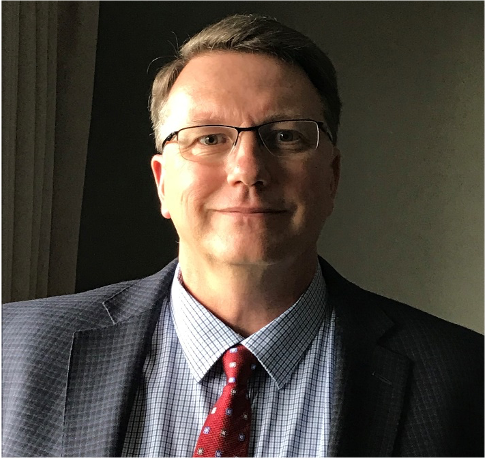
Co-pilot session: From passenger to crew member
About the session
If you regularly accompany a pilot, you’ve probably started learning the basics of piloting by instinct. Not surprisingly, you now want to take a more active role in the cockpit. Here is the toolkit that will allow you to participate in the flight and add to your enjoyment!
A flight instructor will introduce you to the concepts necessary to understand how the aircraft flies, how to maneuver it, and what piloting-related tasks you can help with.
The concepts behind flight:
- What forces are applied to the airplane that allows it to fly?
- What is the role of flight control surfaces and how do you use them?
- How is the engine controlled?
The cockpit:
- What information do the flight instruments give us?
- How do you operate a radio?
- How do radio communications work?
Navigation:
- What are the references used in aviation for orientation?
- How to use aeronautical charts?
How to use the GPS?
Your participation in the flight:
- What are the times and tasks when you can effectively assist the pilot?
- What should be done in case of an emergency?
About the speaker
Hugo St-Pierre graduated from the Centre Québécois de Formation en Aéronautique in 2015 with a college diploma in bush flying, after which he gained experience as a pilot. He is now a flight instructor at CPAQ.AERO and a lecturer at the École de Technologie Supérieure, Master of Aerospace Engineering.
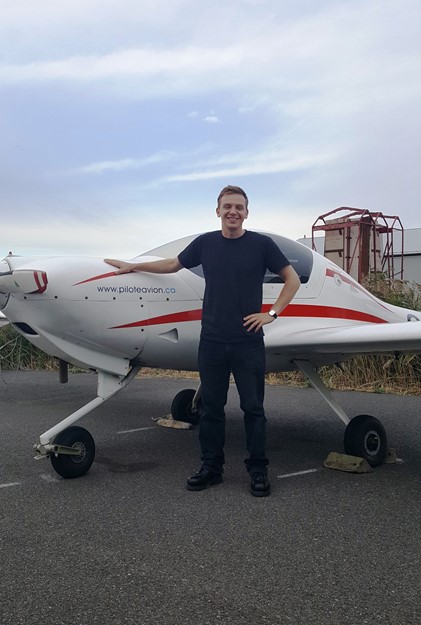
3:00pm - 6:00pm: Piko Mobile Stage Show
You are invited to show off your talent at the Piko Mobile Stage Show!
On Friday afternoon of the fly-in, attendees are invited to watch the live talent show featuring singers, dancers, musicians and more. Attendees will even have the opportunity to show off their own talent!
Send us an email (communications@oldcopa.org) to reserve your spot ahead of time.
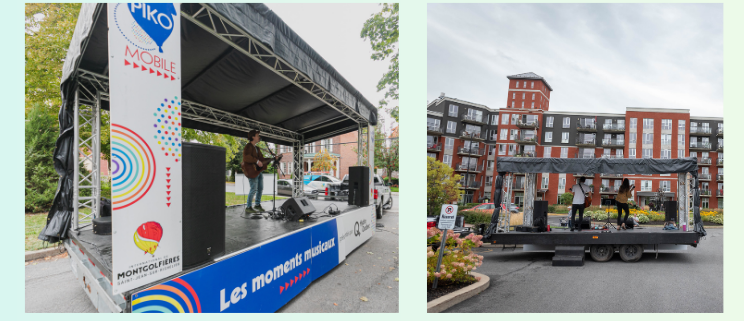
Friday evening
Attendees will have a free evening to rest, recharge and explore Saint-Jean-sur-Richelieu.
During the day, stop by the exhibitor booths to speak with Tourisme Haut-Richelieu and learn more about things to do and see in Saint-Jean-sur-Richelieu and the surrounding communities.
Interested in planning ahead? Click here to learn more about Saint-Jean-sur-Richelieu and fun activities!
Saturday June 25
9am – 4:30pm: Registration and information booth will be available
9am – 6pm: Exhibition – Meet our exhibitors here!
9am – 5pm: Static display
Saturday Shuttle Schedule
Holiday Inn to CYJN
8:15am
8:45am
9:15am
CYJN to Holiday Inn
4:00pm
4:30pm
5:00pm
Holiday Inn to La Goudrelle (Under One Sky – Evening Banquet)
5:30pm
La Goudrelle to Holiday Inn
10:00pm
10:30pm
11:00pm
Saturday Sessions
9:30am - 10:45am: COPA AGM
1:30pm - 4:15pm: Maintenance requirements for aircraft owner’ (24-month recurrent training) (EN)
Location
Hangar 1 at the CYJN airport (signage will be available)
About the session
“The described maintenance has been performed in accordance with the applicable airworthiness requirements.” Was does that mean exactly?
In this session, we will review regulations that concern you and provide an overview for who is responsible for maintenance, how the CARs apply, and what you need to do to keep your airplane airworthy. If you have any questions or concerns this is right time to ask about maintaining your homebuilt aircraft.
Please note, this seminar qualifies for the 24-month pilot recurrent training requirements of the Canadian Aviation Regulations.
About the speaker
Marc Bisson, is a Civil Aviation Inspector Airworthiness with Transport Canada (Quebec Region). He has been a COPA, APBQ, EAA and local flight club member for several years. He has a private pilot license with night, OTT and seaplane ratings and owns an aircraft that he flies on wheel, skis and floats all year round.
He has been working for TCAC for 14 years as airworthiness (maintenance) inspector, part of his task is to oversee the surveillance of the MD-RA inspector in the Québec region and all recreational aviation maintenance matters.
He holds an AME license with the M1 and M2 privileges (large and small aircraft).
He previously worked for several major airlines in Canada and overseas. He also worked for a small FTU Flight training unit as a PRM Person responsible for maintenance.
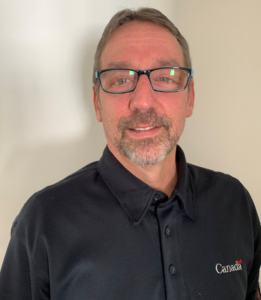
1:30pm - 2:45pm: NAV CANADA on the Montreal Airspace
Location
Hangar 2 at the CYJN airport (signage will be available)
About the session
In this session, NAV CANADA will cover Ville-Marie’s circuit, what to do when a pilot is unsure about what a controller has said, new changes to the RSC format, photo flights around YUL, intersection departures (a new ICAO rule), readback of clearance (when instructed to maintain 1,500 feet to overfly the airport and impact of construction at YUL as well as the limitations imposed by ADM.
About the speaker
Maxime Colette is the youngest controller at Dorval Tower and he’s looking forward to being replaced at that mark. After finishing in the top tier of his class, Maxime was sent from the school directly to Dorval Tower and qualified in 2017 at the busiest tower in the Montreal FIR.
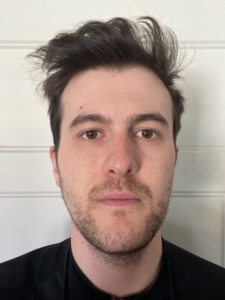
1:30pm - 2:45pm: Aerial Photography
Location
Hangar 3 at the CYJN airport (signage will be available)
About the session
Do you like to take pictures of airplanes on the ground or in-flight? Learn the tips of a professional. What to do and what not to do to get great pictures.
We will discuss how to take pictures with SLR or similar cameras and smartphones, as well as the very important but usually ignored aspect of post-processing to obtain superior quality images. Some examples of photos will be shown. The methods used to achieve the final result will be briefly discussed.
Photos on the ground
Contexts for taking pictures; movements around an aircraft; technical parameters: speed and aperture, framing and perspective; natural or artificial lighting, background, zooming or not, distance from the subject… and safety when taking pictures near aircraft on the ground.
The photos in flight
DSLR, bridge, point and shoot and smartphones. Composition, intention, subject and context are more important than the camera itself and its quality. Smartphones are becoming more and more powerful and can be an alternative to “real” cameras.
The prop, technical approach to make the prop “disappear” and not freeze it, GoPro or cell phone: the “rolling shutter” neutral filter to avoid rubber prop (bananas). Reflections, polarizing filters, dark clothing, the position of the sun.
“Spray and pray”, a method I use in flight, a technique, or rather a philosophy if you will, derived from sports photography. In sports, maximum burst mode: spray the action and then pray that you have the magic moment, it usually works.
About the speakers
Daniel Villeneuve
Daniel Villeneuve has been a pilot for over 30 years and is a renowned cinematographer for film and television. His expertise has been recognized two years in a row, in 2019 and 2020, with nominations at the Canadian Screen Awards for Best Cinematography, Drama, for the television films “Sleeper” and “Mean Queen”. He has won two Gemini Awards and has been a finalist three times. He also won the Best Cinematography Award at the Canadian International Documentary Festival (Hot Docs).
Over the years, he has developed considerable expertise in aerial photography as well as airplanes in flight or on the ground.
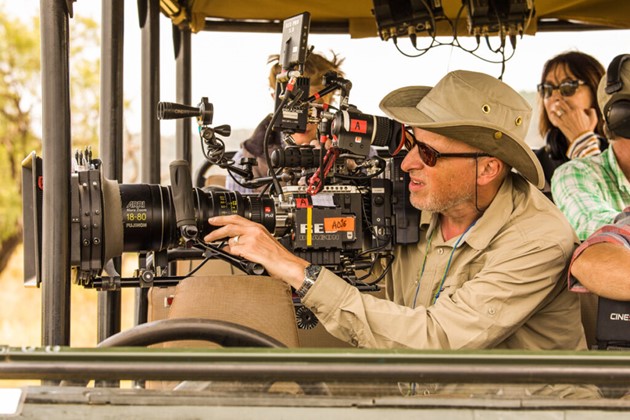
Jean-Pierre Bonin
Photographer of aerial events
For 20 years and is a regular contributor to COPA Flight magazine. He has over 1’700 photos on the reference sites Airliners.net and Jetphotos.net and over 60’000 photos on Flickr! Impressive no?
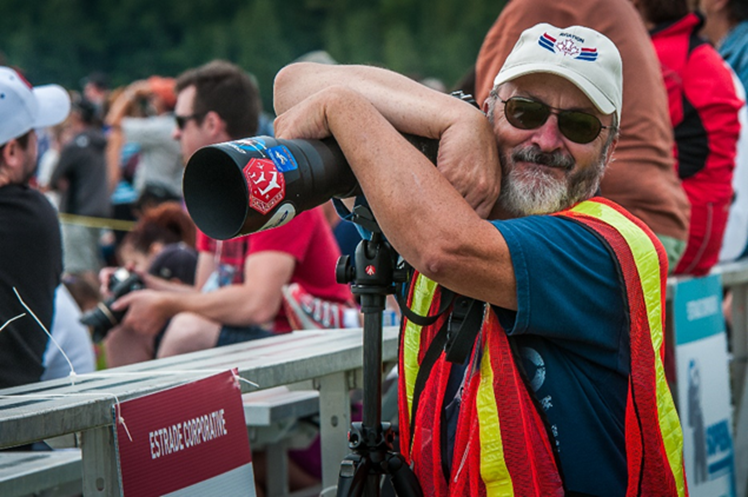
1:30pm - 2:45pm: Federal Aeronautics Power in Canada
Location
Hangar 4 at the CYJN airport (signage will be available)
About the session
Federal Aeronautics Power in Canada
Want to know your rights as a hangar or airport owner? Join this special with Glenn Grenier, Partner, Aviation at McMillan LLP where we will focus on establishing, building or altering an aerodrome. Join us to learn more about COPA’s updated primer.
About the speakers
 Glenn Grenier has a commercial litigation practice focusing on construction and aviation.
Glenn Grenier has a commercial litigation practice focusing on construction and aviation.
Aviation – Glenn has represented all manner of clients in aviation related disputes across Canada. He is general counsel to the Canadian Owners and Pilots Association as well as the Canadian Air Search and Rescue Associations. He was selected as class counsel by the Ontario Superior Court of Justice to represent the passengers of Air Transit 236 following the forced landing of that flight in the Azores in 2001. He has represented parties in wrongful injury and wrongful death cases involving aircraft accidents including the Air France Flight 358. He has represented aerodrome owners in jurisdictional disputes with municipal and provincial authorities. Glenn taught Aviation Law at the University of Western Ontario for four years.
Saturday Evening
Under One Sky – Evening Banquet
This evening banquet being held Saturday, June 25, 2022 includes a keynote presentation from Kathy Fox, Chair of the Transportation Safety Board as well an awards ceremony for this past year’s COPA Volunteer Awards recipients and COPA scholarship recipients.
This years’ evening banquet will be held at La Goudrelle, a popular sugar shack in Mont-Saint-Gregoire.
Already registered? Be sure to indicate your preference for the main course here.
A shuttle bus will be provided from the airport and designated hotels to the sugar shack.
Purchase your ticket to the Under One Sky – Evening Banquet here.
The ticket includes a drink ticket for the cocktail reception and a full course meal.
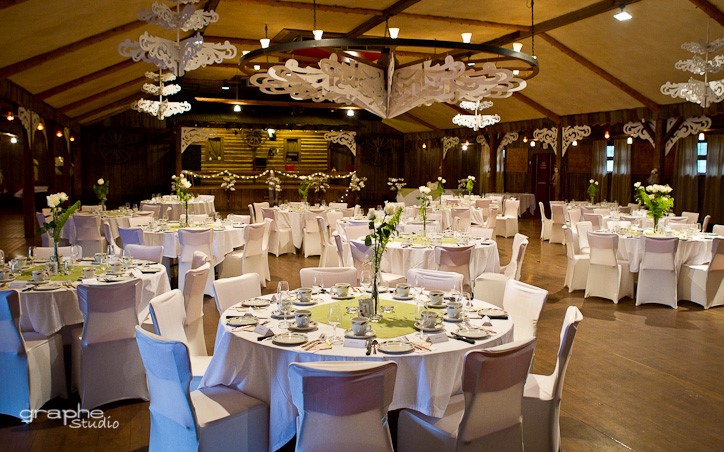
Sunday June 26
8am – 12:00pm: FBO open
Sunday Shuttle Schedule
Holiday Inn to CYJN
8:00am
8:30am
9:00am
9:30am

